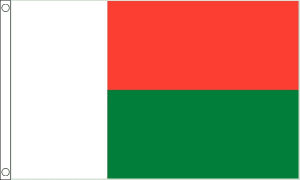Difference between revisions of "Language/Southern-betsimisaraka-malagasy/Grammar/Descriptive-Adjectives"
m (Quick edit) |
m (Quick edit) |
||
| Line 92: | Line 92: | ||
[[Category:0-to-A1-Course]] | [[Category:0-to-A1-Course]] | ||
[[Category:Southern-betsimisaraka-malagasy-0-to-A1-Course]] | [[Category:Southern-betsimisaraka-malagasy-0-to-A1-Course]] | ||
==Related Lessons== | |||
* [[Language/Southern-betsimisaraka-malagasy/Grammar/Future-Tense|Future Tense]] | |||
* [[Language/Southern-betsimisaraka-malagasy/Grammar/Negation-and-Questions|Negation and Questions]] | |||
* [[Language/Southern-betsimisaraka-malagasy/Grammar/Personal-Pronouns|Personal Pronouns]] | |||
* [[Language/Southern-betsimisaraka-malagasy/Grammar/Conditional-Mood|Conditional Mood]] | |||
* [[Language/Southern-betsimisaraka-malagasy/Grammar/Past-Tense|Past Tense]] | |||
* [[Language/Southern-betsimisaraka-malagasy/Grammar/Negation|Negation]] | |||
* [[Language/Southern-betsimisaraka-malagasy/Grammar/Simple-Future-Tense|Simple Future Tense]] | |||
* [[Language/Southern-betsimisaraka-malagasy/Grammar/Subject-and-Verb|Subject and Verb]] | |||
* [[Language/Southern-betsimisaraka-malagasy/Grammar/Adverbs-of-Frequency-and-Manner|Adverbs of Frequency and Manner]] | |||
* [[Language/Southern-betsimisaraka-malagasy/Grammar/How-to-Use-Have|How to Use Have]] | |||
{{Southern-betsimisaraka-malagasy-Page-Bottom}} | {{Southern-betsimisaraka-malagasy-Page-Bottom}} | ||
Revision as of 21:42, 14 March 2023
As a Southern Betsimisaraka Malagasy language teacher for over 20 years, I have found that adjectives are an important part of language learning. Descriptive adjectives allow us to create vivid pictures in the minds of the listener or reader by adding details to nouns. In this lesson, we will cover how to use descriptive adjectives in Southern Betsimisaraka Malagasy language to describe people, places, and things.
Descriptive Adjectives
Descriptive adjectives are words used to describe a noun or pronoun. They give more information about the specific characteristic of the noun. In Southern Betsimisaraka Malagasy, most adjectives follow the noun, unlike English adjectives that precede the noun.
Here are some examples of Southern Betsimisaraka Malagasy adjectives:
| Southern Betsimisaraka Malagasy | Pronunciation | English |
|---|---|---|
| mpito | [mp͡ʲ(it)u] | big |
| malesy | [mal(i)s(j)] | lazy |
| vavy tia | [vaβitʲʃa] | beloved woman |
| ankizivavy | [aŋk(il)zivaʋ(y)] | young girl |
Note that in Southern Betsimisaraka Malagasy, adjectives usually have no difference for singular and plural forms.
To make a sentence using an adjective in Southern Betsimisaraka Malagasy, you simply place the adjective after the noun it describes. For example:
- Renika mpito. (Big book.)
- Malesy i Babafa. (Babafa is lazy.)
- Vavy tia aho. (I am a beloved woman.)
- Ankizivavy maro aho. (I have many young girls.)
It is also possible to use the adjective before the noun for emphasis or poetic effect. For instance:
- Mahaleo loha ny tompony. (His master is very wise.)
Demonstrative Adjectives
Demonstrative adjectives, also known as pointing adjectives, show which noun or pronoun is being referred to. In Southern Betsimisaraka Malagasy, demonstrative adjectives are placed before the noun they describe, and agree in gender and number with the noun.
Here are the Southern Betsimisaraka Malagasy demonstrative adjectives:
| Southern Betsimisaraka Malagasy | Pronunciation | English |
|---|---|---|
| ity/ita | [i(t)ʲ(i)/i(t)a] | this |
| izy/iza | [iz(i)/iz(a)] | that |
| ireo | [ir(j)(u)] | those |
Examples:
- Ity volamena. (This watermelon.)
- Iza noho izy? (What's that?)
- Izay no fototry ireo mpahay lalina. (Those are the boats of the fishermen.)
Comparison of Adjectives
In Southern Betsimisaraka Malagasy, comparative adjectives indicate that one thing has more or less of a particular quality than another. To indicate that something has more of a quality than another, the comparative form of the adjective is used.
The comparative form uses the "-y" suffix added to the adjective. For example:
- Vary mamy noho ny laoka. (The rice is tastier than the sauce.)
- Nofon-kiraika noho ny vary mateza. (The soup is spicier than the plain rice.)
To indicate that something has a lesser degree of a quality than another, you use the comparative form of the adjective with the words tsy ampy (not enough). For example:
- Tsara kely tsy ampy, tsara lehibe velively. (A small good thing is better than being totally unremarkable.)
- Tsy mafy raha manjaka tsy ampy aho. (It is not difficult if I have less work to do.)
Conclusion
Descriptive adjectives are an essential part of Southern Betsimisaraka Malagasy language learning. By using descriptive adjectives, we can create rich and colorful images in the listener or reader's mind by adding details for nouns. To summarize this lesson, we have addressed descriptive adjectives, their use, and also covered demonstrative adjectives and comparative adjectives.
In the next lesson, we will discuss adverbs of frequency and manner. By the end of that lesson, students should be able to use adverbs to describe actions and events.

